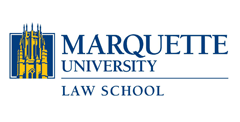A Higher Nonobviousness Standard for Gene Patents: Protecting Biomedical Research from the Big Chill
Abstract
In In re Deuel, the United States Court of Appeals for the Federal Circuit ruled in favor of a patent applicant and found that DNA molecules encoding a protein were nonobvious under section 103 of the Patent Act. Since then, companies specializing in genomic research have filed numerous DNA sequence applications, instigating a troubling trend of patent filings within the biotechnology field. Currently these companies are stockpiling partial DNA sequence patents which have no known function. This Comment presents scientific, political, religious, and ethical justifications for heightening the nonobviousness standard for gene-related patents under section 103 of the Patent Act. The author explains that prior to issuance of a gene patent, an applicant should meet a minimum standard of either complete gene sequence or enough of a gene necessary to determine its function and preliminary diagnostic applications. This proposed standard serves primarily to maintain uniformity with other biotechnological requirements of the patent statute, reduce irresponsible gene patenting behavior in the industry, and regain the public's bargaining power in the patent contract.
Repository Citation
Sara Dastgheib-Vinarov,
A Higher Nonobviousness Standard for Gene Patents: Protecting Biomedical Research from the Big Chill,
4 Marq. Intellectual Property L. Rev. 143
(2000).
Available at: https://scholarship.law.marquette.edu/iplr/vol4/iss1/6
